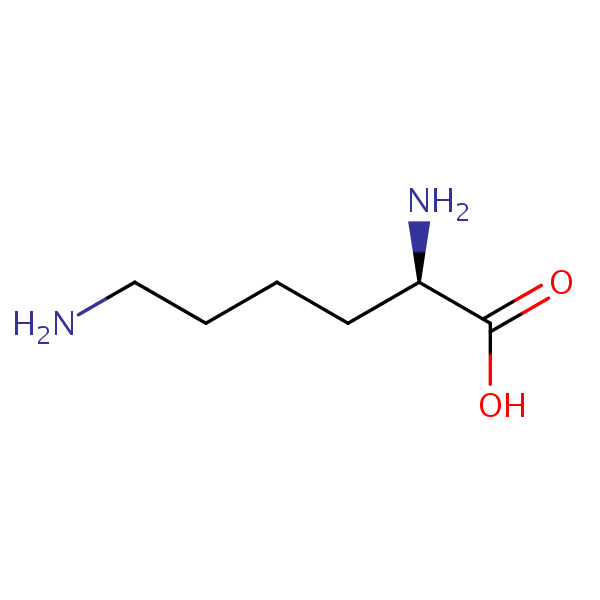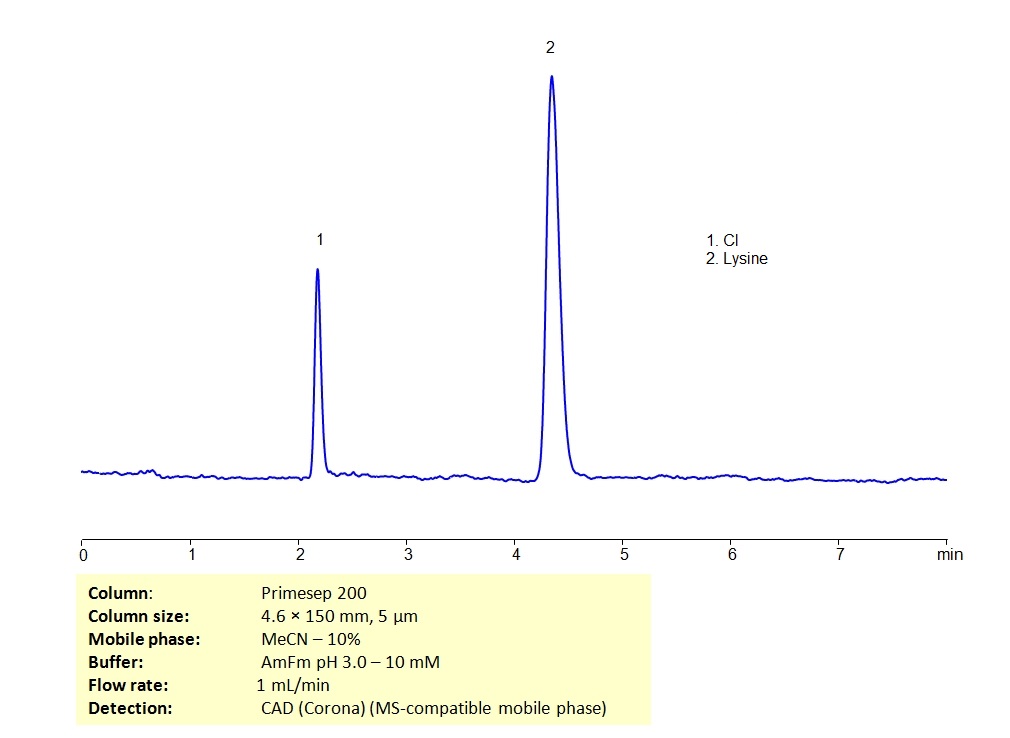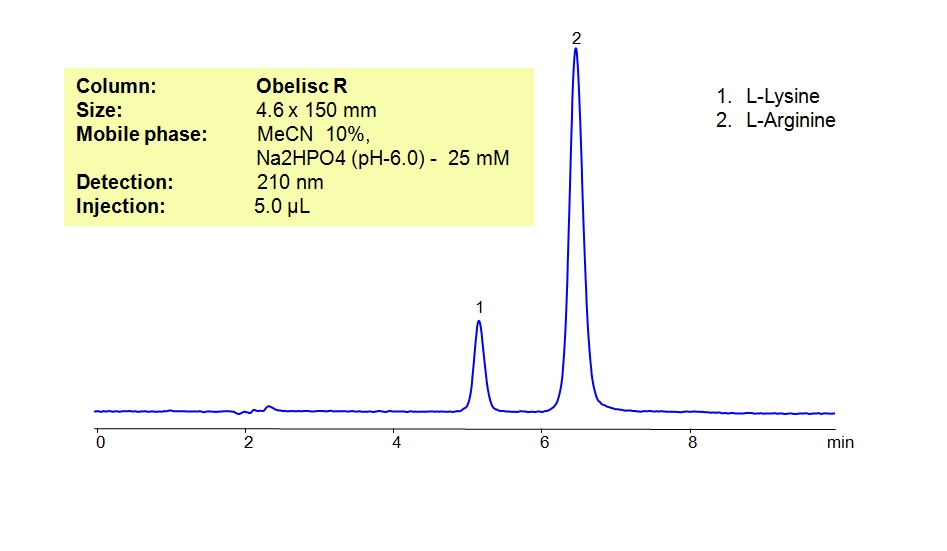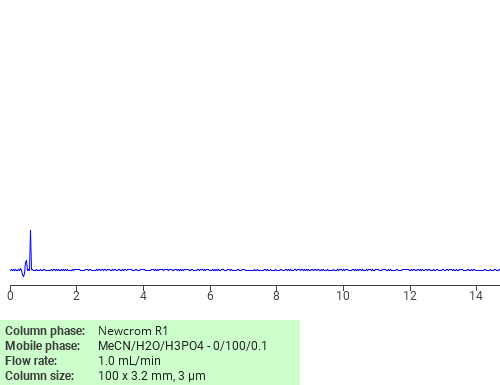| CAS Number | 923-27-3 |
|---|---|
| Molecular Formula | C6H14N2O2 |
| Molecular Weight | 146.191 |
| InChI Key | KDXKERNSBIXSRK-RXMQYKEDSA-N |
| LogP | -2.28 |
| Synonyms |
|
Applications:
HPLC Determination of Lysine on Primesep 200 column in MS-compatible conditions
September 16, 2019
HPLC Method for Lysine, D-Lysine on Primesep 200 by SIELC Technologies
High Performance Liquid Chromatography (HPLC) Method for Analysis of Lysine, D-Lysine
Lysine is an essential amino acid used in the synthesis of proteins. In biological conditions, it is a basic, charged molecule. Lysine can be retained on Primesep 200 mixed-mode column which has embedded weak acidic ion-pairing groups for retention of basic analytes in HPLC. The mobile phase consisting of acetonitrile (ACN) and water with ammonium formate (AmFm) makes this method analysis MS-compatible.
| Column | Primesep 200, 4.6 x 150 mm, 5 µm, 100 A, dual ended |
| Mobile Phase | MeCN/H2O – 10/90% |
| Buffer | AmFM pH 3.0 – 10 mM |
| Flow Rate | 1.0 ml/min |
| Detection | CAD (Corona), MS- compatible phase |
| Class of Compounds |
Acid, Hydrophilic, Ionizable, Carboxylic acid, Drug, Amino Acid |
| Analyzing Compounds | Lysine, D-Lysine |
Application Column
Primesep 200
Column Diameter: 4.6 mm
Column Length: 150 mm
Particle Size: 5 µm
Pore Size: 100 A
Column options: dual ended
Lysine

HPLC Method for Analysis of L-Lysine and L-Arginine
February 28, 2018
HPLC Method for Lysine, D-Lysine, Arginine, N-Nitro-L-arginine on Obelisc R by SIELC Technologies
High Performance Liquid Chromatography (HPLC) Method for Analysis of Lysine, D-Lysine, Arginine, N-Nitro-L-arginine
L-Lysine is an essential amino acid required for growth and tissue repair, it can also help with anxiety. The amino acid is most often found in red meats,beans, fish, and dairy products. L-Arginine is an essential amino acid that is used to treat congestive heart failure, combat fatigue and circulatory diseases. It is also used to stimulate the immune system. Obelisc R is a reverse-phase column. It contains embedded ionic groups and can retain L-Lysine and L-Arginine. The method is UV compatible and can be used as a general approach for analyzing similar compounds.
| Column | Obelisc R, 4.6 x 150 mm, 5 µm, 100 A, dual ended |
| Mobile Phase | MeCN/H2O – 10/90% |
| Buffer | Na2HPO4 pH 6.0 – 25 mM |
| Flow Rate | 1.0 ml/min |
| Detection | UV, 210 nm |
| Class of Compounds |
Drug, Acid, Hydrophilic, Ionizable, Vitamin, Supplements, Amino acid |
| Analyzing Compounds | Lysine, D-Lysine, Arginine, N-Nitro-L-arginine |
Application Column
Obelisc R
Column Diameter: 4.6 mm
Column Length: 150 mm
Particle Size: 5 µm
Pore Size: 100 A
Column options: dual ended
D-Lysine
Lysine
N-Nitro-L-arginine

Separation of D-Lysine on Newcrom R1 HPLC column
February 16, 2018
D-Lysine can be analyzed by this reverse phase (RP) HPLC method with simple conditions. The mobile phase contains an acetonitrile (MeCN), water, and phosphoric acid. For Mass-Spec (MS) compatible applications the phosphoric acid needs to be replaced with formic acid. Smaller 3 µm particles columns available for fast UPLC applications. This liquid chromatography method is scalable and can be used for isolation impurities in preparative separation. It also suitable for pharmacokinetics.
Application Column
Newcrom R1
The Newcrom columns are a family of reverse-phase-based columns. Newcrom A, AH, B, and BH are all mixed-mode columns with either positive or negative ion-pairing groups attached to either short (25 Å) or long (100 Å) ligand chains. Newcrom R1 is a special reverse-phase column with low silanol activity.
Select options






